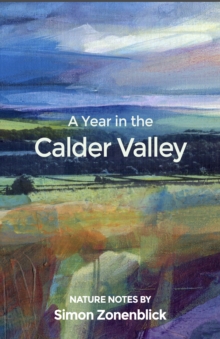Description
| Product ID: | 9781913393755 |
| Product Form: | Paperback / softback |
| Country of Manufacture: | GB |
| Title: | A Year in the Calder Valley |
| Authors: | Author: Simon Zonenblick |
| Page Count: | 112 |
| Subjects: | The countryside, country life: general interest, The countryside, country life |
| Description: | Select Guide Rating The Calder Valley, in the glorious countryside of West Yorkshire, is a dramatic, often steep-sided landscape that is home to a wonderful variety of birds, animals, trees and wildflowers. Together they form a green sanctuary, where it's easy to forget the world beyond. Here, Simon Zonenblick observes it all in a series of stunning vignettes. Rising on Lancashire's Heald Moor, the River Calder flows through the glorious countryside of West Yorkshire until it joins the River Aire, near Castleford. Its often steep-sided valley was formed by glacial erosion of a bedrock of millstone grit and carboniferous rock, over the course of millions of years. With more than its fair share of rainfall, the valley's rushing river was central to the industrial heyday of the Pennines, when the waterway was modified with "cuts" to form a navigable canal. The legacy of the textile industry is seen in the remaining mill and factory buildings. Today, renovated mills are popular as dwellings, and the canal is a place of leisure, where boaters, walkers and cyclists can enjoy nature's sights and sounds. The Calder Valley, in the glorious countryside of West Yorkshire, is a dramatic, often steep-sided landscape that is home to a wonderful variety of birds, animals, trees and wildflowers. Together they form a green sanctuary, where it’s easy to forget the world beyond. Here, Simon Zonenblick observes it all in a series of stunning vignettes. Rising on Lancashire’s Heald Moor, the River Calder flows through the glorious countryside of West Yorkshire until it joins the River Aire, near Castleford. Its often steep-sided valley was formed by glacial erosion of a bedrock of millstone grit and carboniferous rock, over the course of millions of years. With more than its fair share of rainfall, the valley’s rushing river was central to the industrial heyday of the Pennines, when the waterway was modified with “cuts” to form a navigable canal. The legacy of the textile industry is seen in the remaining mill and factory buildings. Today, renovated mills are popular as dwellings, and the canal is a place of leisure, where boaters, walkers and cyclists can enjoy nature’s sights and sounds. |
| Imprint Name: | Saraband |
| Publisher Name: | Saraband |
| Country of Publication: | GB |
| Publishing Date: | 2023-08-24 |


